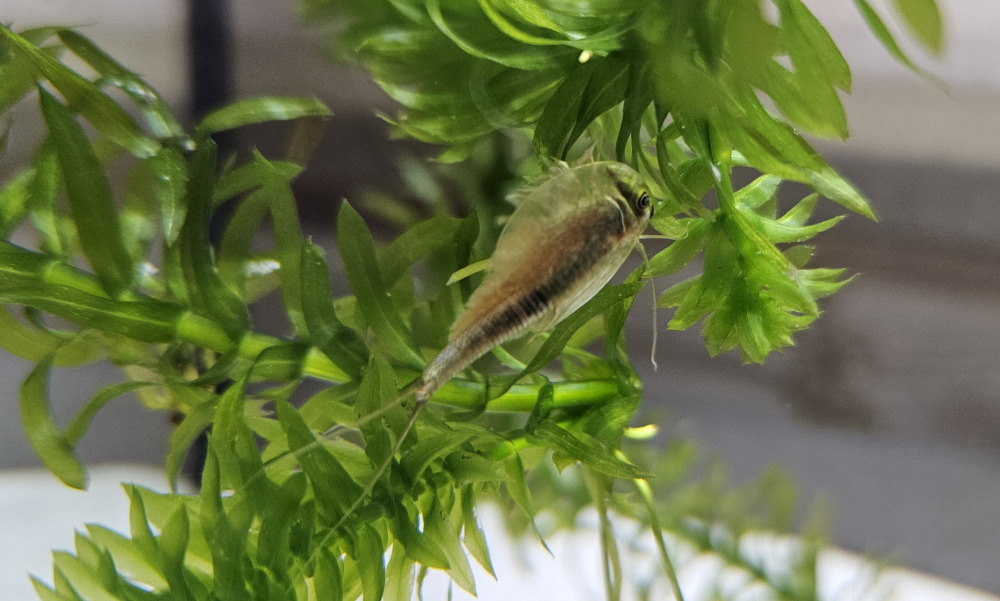Guide
Triops longicaudatus – Did you know THAT about the American crayfish?
Triops are small prehistoric creatures that look as if they have stepped straight out of a prehistoric adventure film. Triops longicaudatus, also known as the American prehistoric crayfish, is one of the oldest living animal species in the world today. And that is no exaggeration: These fascinating crustaceans have existed for around 220 million years and have barely changed in all that time. A real living fossil – and you can observe it in your own home. In this blog article, I explain why the Triops longicaudatus is so unique.

Triops longicaudatus: A life under extreme conditions
Triops are true survival artists. Their habitat is temporary bodies of water in North America – in other words, they live in puddles, pools or rainwater basins that are often only filled with water for a few weeks. This is exactly what makes them so special. This is because they have adapted perfectly to life in extreme conditions: Their eggs, known as permanent eggs, can survive for years in dry soil. As soon as it rains again and water collects, tiny larvae – known as nauplii – hatch within a few hours and life begins again.
Triops longicaudatus grows incredibly quickly. Within a few days, the nauplii develop into impressively agile crustaceans with a shield-like carapace, long tail appendages and strong shovel legs with which they tirelessly rummage through the substrate. You will be amazed at how active they are! They are sexually mature after around two weeks – a necessary adaptation in a world where the water can soon disappear again.
One egg is enough to survive
What is particularly exciting is that most Triops are females, although many animals are hermaphrodites and can also reproduce without a partner. This means that even if only a single egg survives, this is enough to produce a new generation. This type of reproduction, known as parthenogenesis, is another example of the incredible adaptability of these animals.
If you decide to breed Triops, you are bringing a little piece of prehistoric times into your home. Breeding is relatively simple, but requires a little patience and attention – especially in the first few days after hatching. It works best with distilled or boiled water, a small breeding tank and some light. It is important that the water temperature remains constant, as Triops are thermophilic animals and develop best at temperatures between 24 and 28 degrees Celsius.
Short life span
What makes Triops longicaudatus so exciting is not only their primeval appearance, but also their behaviour. They tirelessly forage through the substrate, eating everything that gets in their way – dead plant matter, food scraps, small microorganisms. They are curious, active and by no means boring aquarium inhabitants. Sometimes they seem to communicate with each other or fight for territory. Observing their daily activities is a real experience.
Even though their lifespan is short – usually around 30 to 90 days – they leave a lasting impression. And most importantly, they leave behind new eggs that you can dry and store for the next generation. So the cycle lives on – almost like in nature.
For children, but also for adults, keeping Triops is an exciting opportunity to experience biology and evolution up close. Not only do you learn how fascinating life can be in its simplest forms, but you also gain a sense of responsibility, observation and patience.
Triops longicaudatus – Conclusion
Triops longicaudatus is more than just an extraordinary pet – it is a window into the past, a survivor and a real favourite. Once you have seen how a tiny, barely visible egg becomes a living mini-dinosaur that fascinates you with its lightning-fast movements and curiosity, you will understand why so many people are fascinated by these little prehistoric creatures.
So why not try it out for yourself? With a little preparation and interest, you will soon be able to experience in your living room what life might have looked like hundreds of millions of years ago – in miniature. Triops longicaudatus is just waiting to whisk you away to its ancient world.